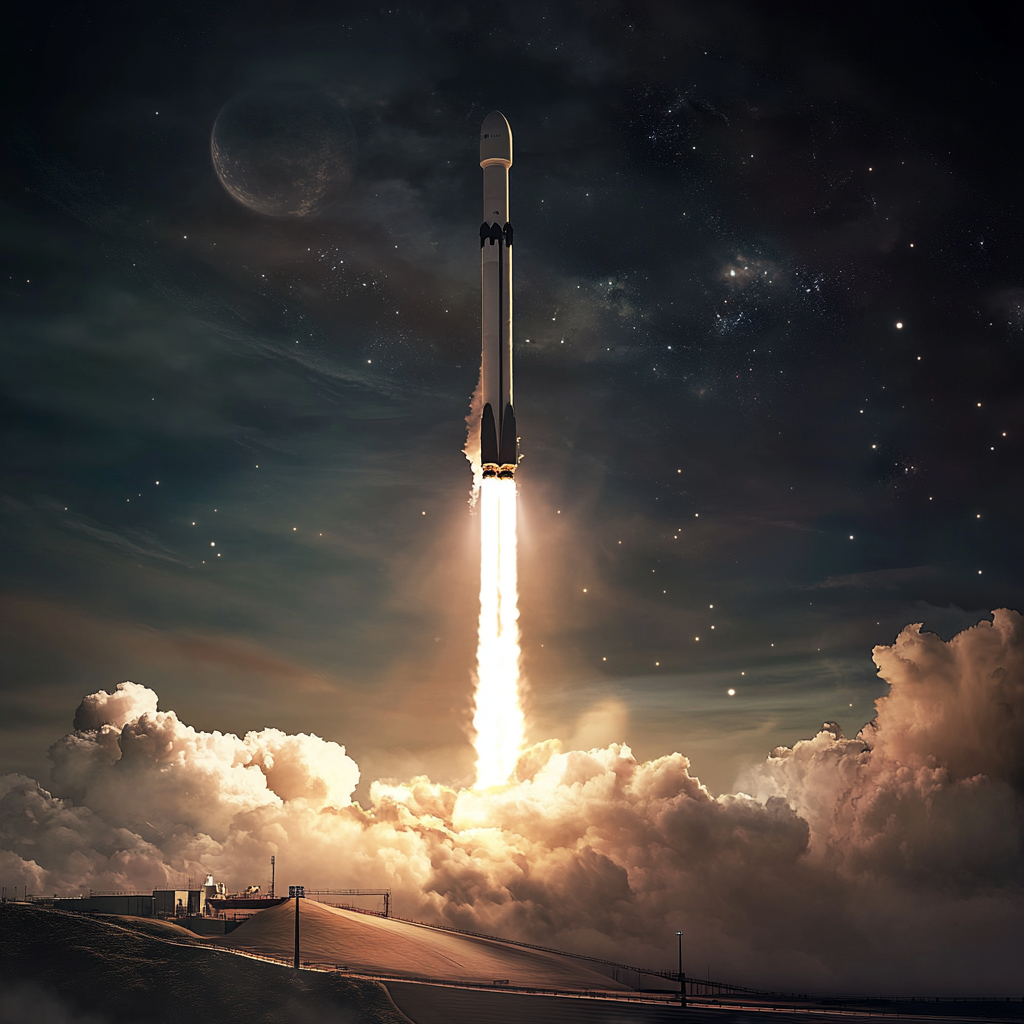
Satellite Deployment Set for Dec. 21 on SpaceX Mission
On December 21, 2024, SpaceX blasted into the cosmos once again, deftly launching 30 different satellites into the sky on their glitzy Bandwagon-2 rideshare mission. And honestly, let’s just take a moment to grasp the sheer audacity of such a feat. This isn’t some backyard hobby; this is SpaceX’s relentless march toward giving us more satellite Internet, better Earth monitoring, and who knows, perhaps a popcorn delivery service from low Earth orbit, if that ever becomes a thing. Let’s unpack the details of this impressive performance that keeps pushing the boundaries of our collective human endeavor.
Now, if you’re wondering about the mission, you should know that Bandwagon-2 marks SpaceX's second crack at a dedicated rideshare flight aimed at a mid-inclination orbit. But here’s the kicker: this strategic maneuver keeps satellites hugging the populated areas around our globe, as opposed to providing the global security blanket that near-polar orbits deliver. It’s almost like they know where the partying happens – more people on the ground means more potential customers for satellite services later. Coincidence? I think not.
Launch Details: The Whole Shebang
Picture this: It’s 3:34 AM PST (that’s 11:34 UTC for our international friends), and the Falcon 9 rocket—equipped with the booster B1071, which has seen the wild side of 20 successful missions so far—launches from the pristine Space Launch Complex 4E at Vandenberg Space Force Base in sunny California. Sure, the moon might be slightly jealous right now, but it’s probably just basking in the glow of another successful launch that once again emphasizes the reusability of SpaceX's technology, which is, let's be honest, totally mind-boggling. Someone tell Elon Musk we appreciate his wizardry.
Payloads: A Cosmic Chowder
Let’s dive into the goods delivered aboard this spice-laden mission. The Bandwagon-2 was no ordinary bus service; it carted a delightful medley of 30 payloads, featuring an eclectic mix of hungry satellites from both commercial and governmental realms. Notable standouts include:
-
South Korean SAR Satellite: First up, we have the third "425 Project" reconnaissance satellite for the South Korean military. This hefty critter is a collaboration between Thales Alenia Space, Korea Aerospace Industries (KAI), and Hansha Systems Corporation. Talk about tactical teamwork!
-
ICEYE SAR Satellites: Next on the star-studded guest list were two synthetic aperture radar (SAR) satellites from ICEYE, capable of sending back radar shots with a jaw-dropping resolution of 25 centimeters. In simpler terms, if you’re trying to hide something on Earth, you might want to think again.
-
HawkEye 360 Satellites: Not to be outshone, HawkEye 360 joined the party with three newly minted satellites dubbed Cluster 11. These tech wonders are geared up for some serious radio-frequency intelligence. Imagine them as the eavesdroppers of the satellite community, collecting data like nobody's business.
- Other High-Flyers: The guest list didn’t end there. Sidus Space, Tomorrow.io, True Anomaly, and Think Orbital threw their hats in the ring as well. All those payloads? Exolaunch had the delightful task of managing 22 of them for this mission. Hats off to them!
Mission Execution: The Finesse of Reusability
In a little over eight minutes, the Falcon 9 booster strutted its stuff by returning to Landing Zone 4 (LZ-4) at Vandenberg Space Force Base. It’s almost like it was winking knowingly at the audience watching from the ground, showcasing that impressive reusability that SpaceX has turned into a fine art. Gone are the days of disposable rockets; we’re knee-deep into an era where rockets are more 'like-me' than 'one-and-done.'
As for deploying the payload? That was no small feat either. The second stage of the Falcon 9 performed a couple of fiery burns to gently let loose those satellite children at altitudes of around 510 to 570 kilometers. The South Korean satellite took the high road, getting deployed at the point that just screamed, “Look at me! Isn’t my view incredible?”
Significance and Future Plans: And They Just Keep Going
This mission didn’t just mark another Saturday morning stroll in space; it was the 130th Falcon launch for SpaceX this year. If you hang around the stats, you realize that 2023 was like a beach-side vacation compared to the hustle and bustle of 2024. Sure, Musk’s ambitious goal was set at 148 launches, but we’re still giving a round of applause to a solid expected count of around 136 launches—because who wouldn’t want to end the year with a bang?
But wait, there’s more! SpaceX is looking for two more Bandwagon missions slated for 2025—because why not keep the rocket-fueled momentum rolling? Their plans also include shooting for the stars with a target of 175 to 180 launches in the same year. Now, that’s a New Year's resolution we would gladly endorse.
Conclusion: The Jetsons Are Jealous
All in all, the Bandwagon-2 mission stands as a testament to SpaceX's insatiable drive for innovation and efficiency. With an eye-popping ability to launch not one, but many satellites in one go, the company is reshaping our understanding of what’s achievable in the realm of space exploration. Who knows, we might even be discussing interplanetary delivery services one day.
Want to stay up to date with the latest news on neural networks and automation? Subscribe to our Telegram channel: @channel_neirotoken

